Japan earthquakes: Dozens dead and 1,500 injured after second quake in two days
Poor weather has hampered rescue efforts and caused landslides
Your support helps us to tell the story
From reproductive rights to climate change to Big Tech, The Independent is on the ground when the story is developing. Whether it's investigating the financials of Elon Musk's pro-Trump PAC or producing our latest documentary, 'The A Word', which shines a light on the American women fighting for reproductive rights, we know how important it is to parse out the facts from the messaging.
At such a critical moment in US history, we need reporters on the ground. Your donation allows us to keep sending journalists to speak to both sides of the story.
The Independent is trusted by Americans across the entire political spectrum. And unlike many other quality news outlets, we choose not to lock Americans out of our reporting and analysis with paywalls. We believe quality journalism should be available to everyone, paid for by those who can afford it.
Your support makes all the difference.At least 41 people have been killed and at least 1,500 injured in the second earthquake to hit Japan in two days.
The earthquake had a powerful 7.3 magnitude which was felt across the Kumamoto region on the southwestern island of Kyushu at 1.25am on Saturday local time, leaving hundreds of thousands without electricity or water.
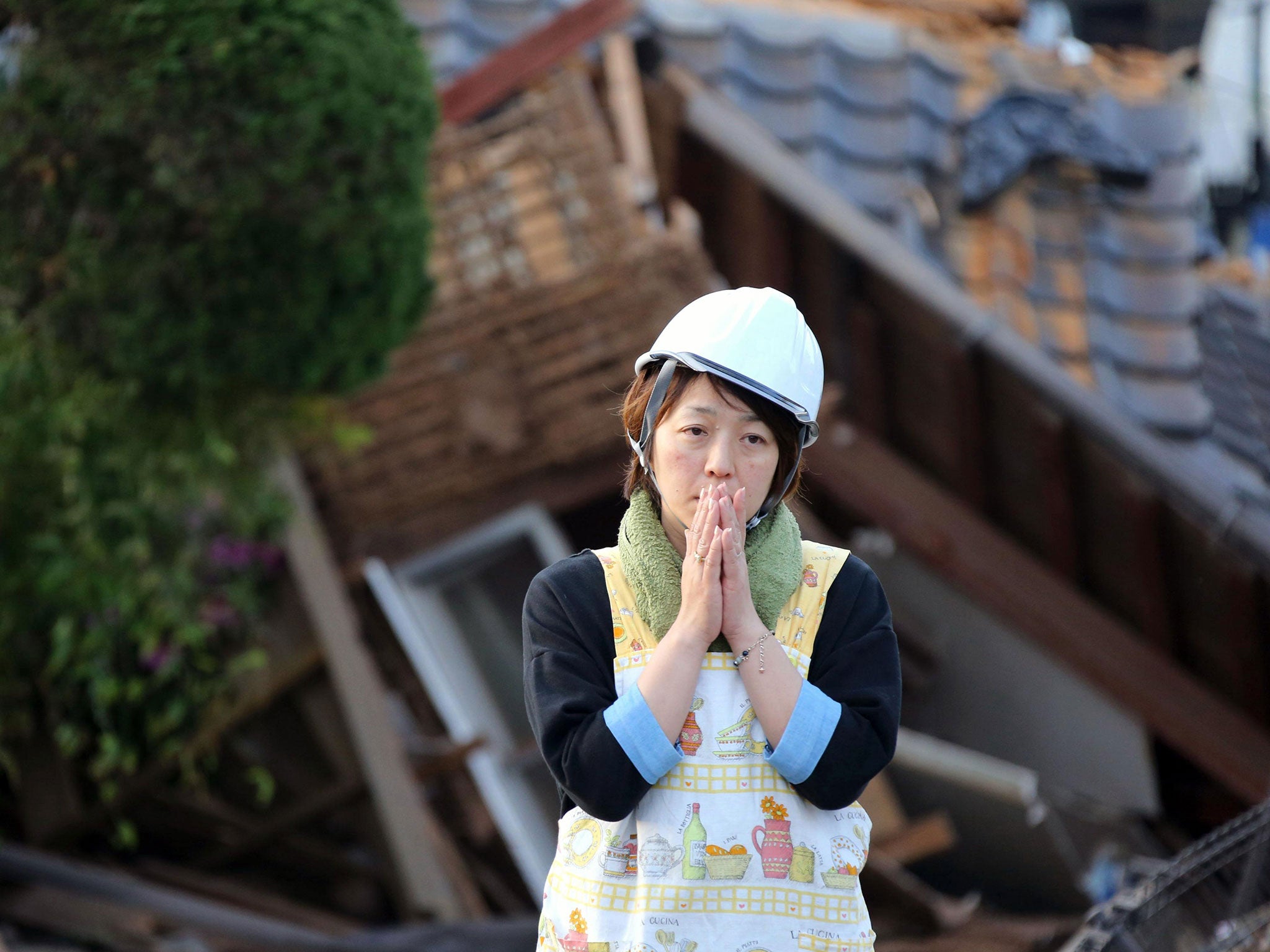
The quake struck at a depth of 12 kilometres and followed a magnitude 6.2 earthquake, at a depth of 11 kilometres, which hit on Thursday in the same region.
Numerous buildings have collapsed and rescuers were digging through rubble, mud and debris to try and reach those trapped, but continued aftershocks hindered rescue efforts and fuelled fears of more powerful quakes. Thousands of soldiers were being sent to the scene to help.
Kumamoto Prefectural official Tomoyuki Tanaka said the death toll was expected to climb and at least 180 of the people injured were in serious condition. Around 90,000 people have been displaced and some are being sheltered in schools and official buildings.
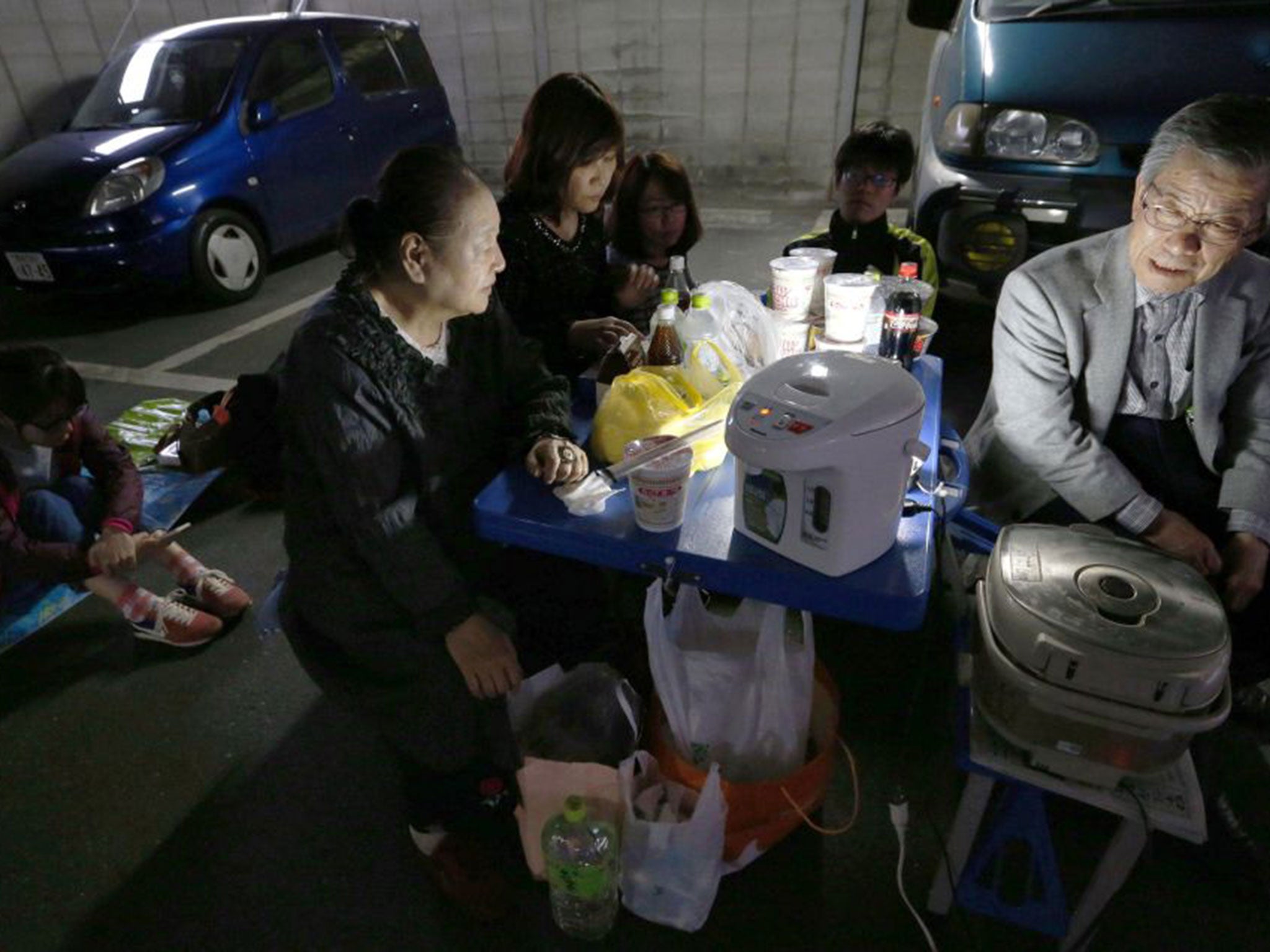
People have been lining up for food rations at shelters, some distributed by the military, and most shops have run out of stock. In more remote areas, others have been stranded with some vulnerable people being airlifted out.
The worsening weather has further complicated the situation, with the tremors and heavy rain setting off landslides.
One of the hardest hit areas was the village of Minamiaso in the Kumamoto Prefecture, where a huge landslide tore open a mountainside from top to bottom, completely covering a highway at the bottom.
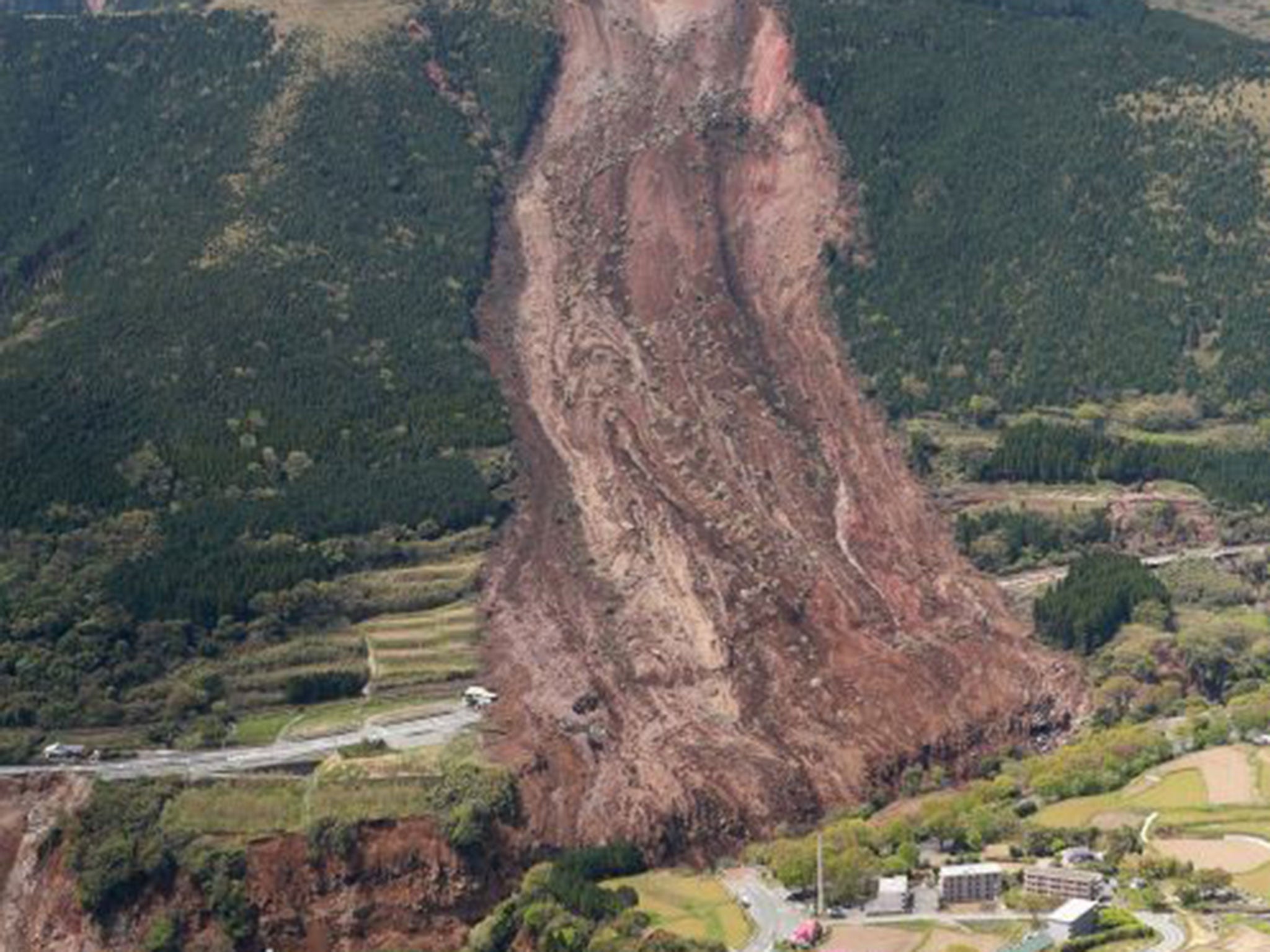
Other landslides caused houses to be swamped by mud, with heavy machinery being used in an effort to recover their inhabitants.
Police received reports of 97 cases of people trapped or buried under collapsed buildings, while 10 people were caught in landslides, Japanese news agency Kyodo News reported.
The landslides have also caused significant damage to infrastructure:
"Nothing is more important than human life and it's a race against time," said Prime Minister Shinzo Abe, warning rescue efforts were critical with stormy and wet weather forecast overnight, which could further damage weakened buildings and cause landslides.
"I want rescue activities to continue with the utmost effort," Mr Abe said at a government meeting after the disaster.
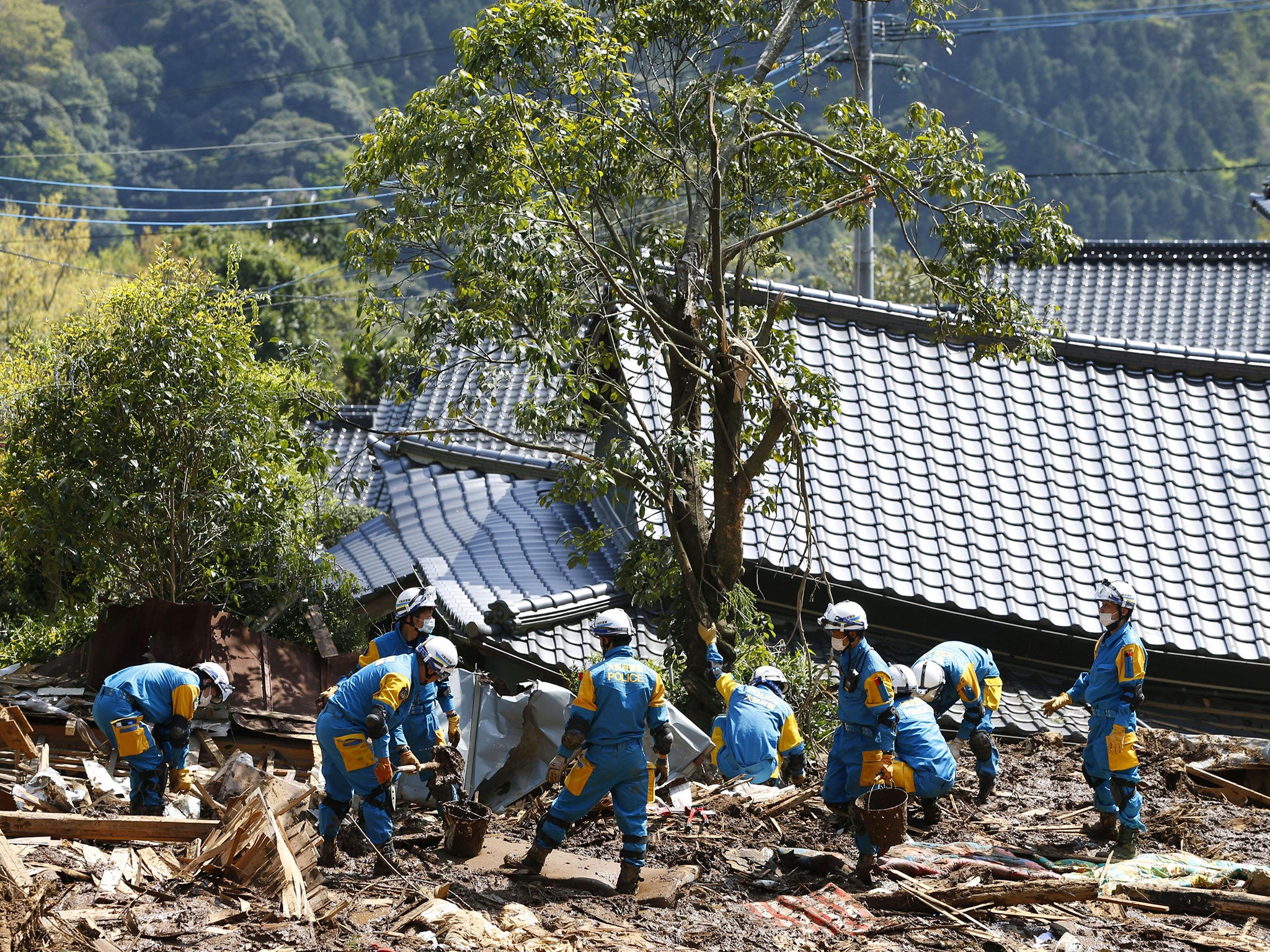
The quake triggered a tsunami advisory which was later lifted and no irregularities were reported at three nuclear power plants in the area, a senior government official said.
The walls of Kumamoto Castle, which had previously withstood bombardment and fire in its four centuries of existence, were also breached. The fortification in the city of Kumamoto has stood as one of Kyushu's icons ever since it was built in 1607 but a large section of the stone wall housing the castle has collapsed in a dusty heap.
The US Geological Survey estimated there was a 72 per cent likelihood of economic damage exceeding $10 billion, adding that it was too early to be specific.
Electronics giant Sony Corp said a factory producing image sensors for smartphones will remain closed while it assesses the damage from the quakes. Toyota Motor Corp halted production at three plants which produced vehicles, engines and trans-axles in Fukuoka. Toyota said there was no damage at its plants, but it was checking the status of its suppliers. It will decide on Sunday whether to resume production. Nissan Motor Co Ltd stopped production at its Fukuoka plant which produced vehicles.
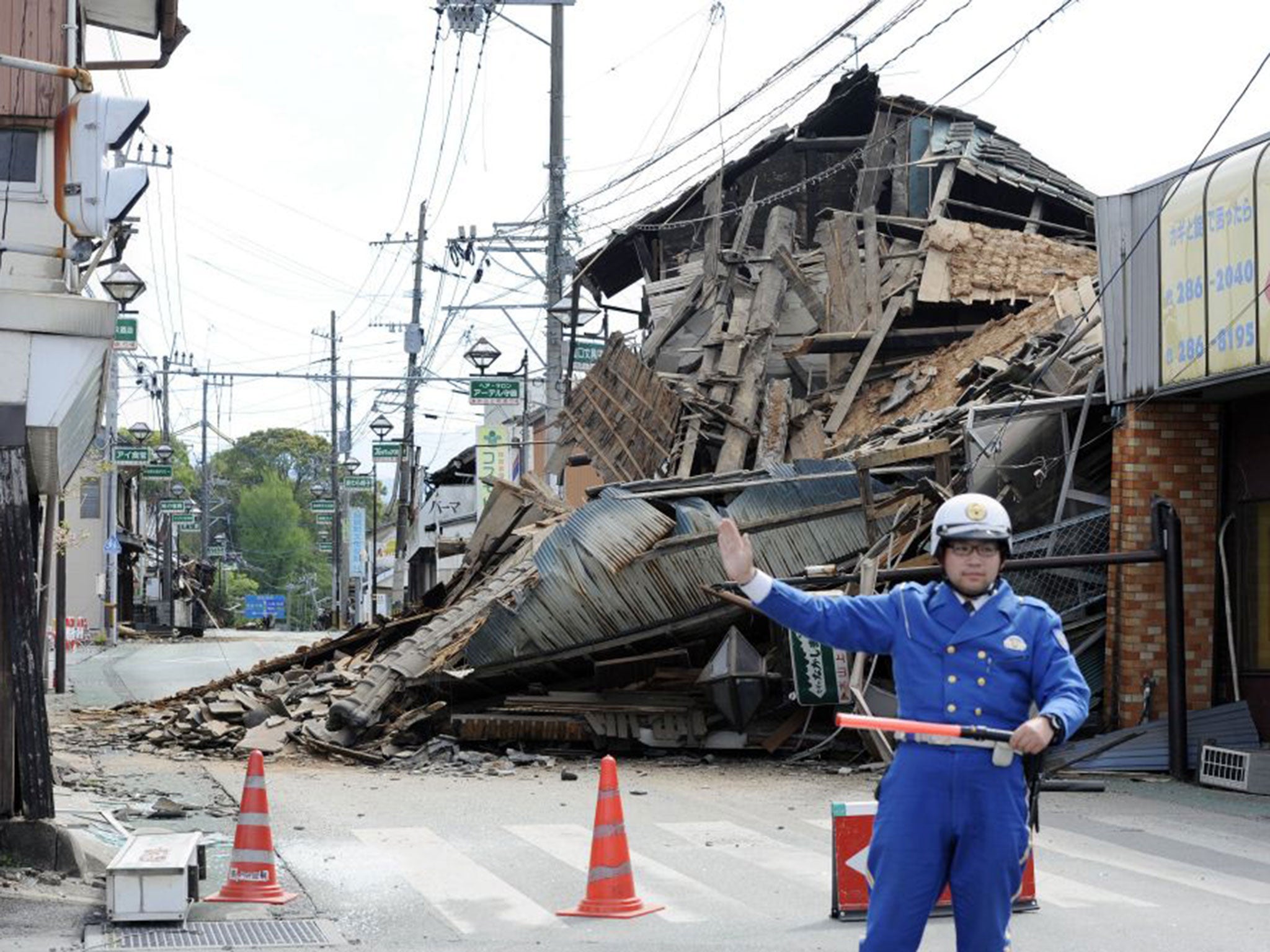
The Japan Meteorological Agency said that Saturday earthquake may have been the main quake, with the earlier one on Thursday a precursor. The quakes' epicenters have been relatively shallow — about 10 kilometres (6 miles) — and close to the surface, resulting in more severe shaking and damage.
However, the danger for residents is not yet over and the Japanese Meteorological Agency reported more than 230 aftershocks of at least level 1 on the Japanese scale since Thursday's shock.
"We have already seen several of the mid to upper 5 plus magnitude range, and over the next several days and weeks, we would not be surprised to see more earthquakes of this size," said John Bellini, a geophysicist with the US Geological Survey.

In addition, a small eruption occurred at a volcano in southern Japan the earthquake, spouting out 100 meters of smoke. However, this volcanic activity is relatively normal for the area and the Japanese Meteorological Agency has kept its alert level at 2, on a scale of 5, for Mt. Aso.
British Prime Minister David Cameron said he was "deeply saddened" by the news and added the UK was "ready to do what it can to support Japan's response in Kumamoto".
The Indian Prime Minister also tweeted his thoughts:
A spokesman for the US government said America was ready to provide “any and all assistance” that might be needed by Japan.
The Associated Press and Reuters contributed to this report

Join our commenting forum
Join thought-provoking conversations, follow other Independent readers and see their replies
Comments